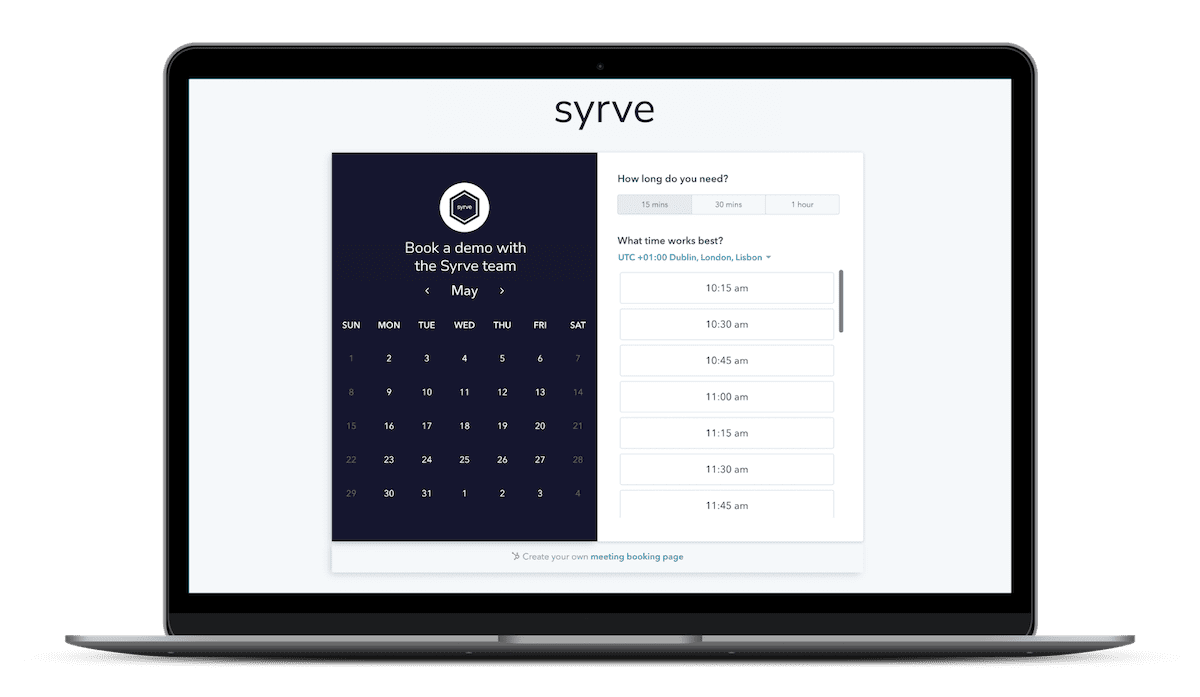Time (and a pandemic) erodes narratives. Old reseller business models included.
Hopefully that’s not how you think about your business or position… but thinking growth dynamics in a changing environment in particular, there’s a scramble for market share in the new world of POS resellers.
Lifestyle POS resellers
Over the years, you have built a successful lifestyle POS reseller business based on your philosophy, mission and practices – moving beyond client and vendor relationships and building true local partnerships with customers at the core of what you do.
You’re not one of the herd.
However, in this new world finding those once simple manoeuvres to maintain margin is an increasing challenge:
- ‘Wolf-of-wall street’ style POS vendors are crippling prices
- Customer attrition is rising due to reduced footfall and increased cost bases
- Merchants are getting more tech savvy with more tools than ever to transform their business
- Coronavirus is proving you need a better and quicker R&D response from your POS supplier.
Do you have the energy left in the tank to reinvent?
If you do, you may be prime for the next generation of POS buyer. To maximise sales, attract higher margins and increase business value.
Even if you don’t and you’re planning your exit, you’ll probably want to prepare your company well to exist into future generations.

Growth-minded POS resellers
Your business has reached a more mature stage in its lifecycle, few ever reach.
Future expansion is becoming complex and requires more structure. However, you recognise it’s time to acclimatise to the new world.
The rate of change is moving at hyper speed, forcing you to evolve your business structure, partnerships and key metrics – while juggling finite resources at hand.
It’s time to re-tool.
To find innovative solutions that serve customers in meaningful and sustainable ways, providing tangible ROI and value. While, using the local connections that have long made your Value-Added Reseller (VAR) business model competitive.
Reshaping your business model will involve some navel-gazing, so here’s some strategies to help get you started:

Market penetration
Cutting to the chase: do you offer unique value?
How are you going to differentiate yourself from rivals? Do you have a solution that meets the market needs better than anyone else’s? Does your POS software vendor support you enough by churning out innovations at breakneck speed?
Most VAR models are horizontal plays, with broad applicability. But this doesn’t mean they will command the highest margins or company valuations.
Without differentiation you will be quickly dragged into the Walmart “Always Low Prices” approach which needs scale and super efficiency to sustain.
In these tough times, smart VARs are segmenting the market and focusing on specific niches and expanding from there.
It enables them to create a “whole solution” offer that includes value-added service wrappers around the POS, amongst other things.
For example, it’s a well-known fact that it takes several repeat visits for consumers to change habits permanently. After the lockdown, merchants needed advice on how to ‘retrain’ consumers to change their habits again.
With the latest of tools and ability to exploit real-time actionable insights they can advise and train clients on how to identify the right incentives, prices and promotions to trigger behaviour change – and to deliver real tangible business impact.
How well invested are you in leading POS tech?
The quality and differentiation of what you offer is critical, especially in a market flooded with sub-par, lookalike solutions.
Audience expansion
Another growth tactic is expanding your reach and offering your solution in a new geographical area.
Historically, local resellers were masters at fending off competitors from their patch. Ring-fencing a 30 mile, 50 mile, or more radius from their business.
However, it’s likely you’ll need more than a gentleman’s agreement to stop the impending land grab resulting from continued market consolidation and tier 1 growth.
If your current market is a struggle, you face stiff competition, or growth is slow, you may well have to consider expansion to a new region – directly or via established networks.
Hyperlocal support may be part of your founding principles, but geographical boundaries disappear fast if sales teams are armed with modern and unique cloud-based solutions, backed by a fast and efficient service offering, aided by tech.
Whatever your stance, it’s always been important to understand your target market, the pressures and psychological factors that play in their decision making.
This is where reputable VARs excel.
They work directly with merchants to find the right blend of technology, hardware, and software that fits their business needs – bringing decades of experience to ensure their solution meets the needs of their customers, no matter how niche the industry.
Some VARs are even going deeper, by hyper targeting persona’s in niche sectors and creating compelling “whole solution” offerings to support them.
This helps to better connect and expand their audience as they move into new markets.
An example is the targeting of CEOs in Quick Service Restaurant (QSR) chains who are under pressure to improve margin control.
The reasons for this issue are they are hampered by slow, ineffective legacy POS tech and need a better way to:
- Incorporate strict inventory controls
- Track the cost of food
- Track all food waste
- Monitor cost of labour.
The CEO is looking for modern tools to deliver bottom-line impact;
- Real-time inventory control
- Suggested and automated purchasing
- Easy rota management supported by AI-sales forecasts
- Real-time P&L controls.
The more you can configure how the technology will specifically work for the specific needs of the customer, the more trust you build to ensure revenue and a “sticky” relationship.

Product line expansion
Expanding your product line is another important approach to your growth model, especially if your software partner is active and effective with R&D.
At Syrve, we understand your customers expect you to be able to see what they can’t.
Our 100-strong development team delivers 3 major releases a year with bi-weekly sprints and ongoing cloud software updates to ensure we stay ahead of the pack.
The best end-to-end, cloud-based tech should evolve easily, with changes deployed at speed. In sharp contrast legacy POS systems can be inflexible and slow to respond.
Ideally you want most of these capabilities on a unified cloud platform vs. a bag of complicated discrete legacy tools. It helps customers achieve process efficiency and reduces your complexity to maintain.
During Coronavirus, speed and flexibility have been essential in helping customers implement new government schemes (VAT change, EOTHO etc.) while capture a share of evolving markets with solutions for food delivery and dark kitchens.
For example, operators required solution capabilities to help:
- Run their business as two operations: Dining (as it returns) and online food delivery.
- Make it easy for customers to order direct from them on their smart devices.
- Enable orders from platforms like Deliveroo and UberEats to appear automatically in their system without middleware costs or rekeying.
- Use an advanced POS to optimise their operations end-to-end for online orders, kitchen efficiency and deliveries.
- Keep their costs under control, so they can compete with other restaurants and dark kitchens, etc.
The right tech is available for all this to happen extremely quickly.
It can also help VARs reach a higher tier of customer by creating a variation of their core product line with cloud software that is scalable and extensible.
Solution diversification
In the new world, to better serve your customers budget, and your bottom-line, diversifying products and revenue streams may be key.
Diversification is often considered a risky growth strategy (especially if it involves launching new products into new markets), but it can be an invaluable extension to your business model.
In fact, as the rate of change intensifies diversification may even be a prerequisite for success.
For example, many successful VARs have already transitioned to Software-as-a-Service (SaaS) and a recurring revenue stream, which offers a flow of predictable monthly income. It also provides options for merchants that affordably accommodate their budget and minimises buyer’s risk.
Another example is the trend of larger VARs looking to become tech enabled service providers. They want to combine their own ISO payment service with POS solution to widen their reach and create a deeper relationship with their audience.
Turning this tap on can be relatively easy as payments companies continue to undertake more aggressive partnerships. Competition is intense, interchange rates are reducing, and they are looking for solution-led partners to help reduce customer attrition.
As successful VARs diversify their hold and solid position in their core markets and the scramble for market share continues, more partnerships and more consolidation is to be expected.
It’s time to look past old relationships and short-term goals. Create your vision for the new world, refresh your business model and build value for your company and your customers.
While doing so take time to explore the next generation of software that’ll meet the growing needs of your audience and growth plans.
#DemandMore.
Information
To learn more about Syrve’s Solution Partner Program:
- Landing page: https://Syrvesoftware.com/partner-program.
- Contact email: info@Syrvesoftware.com, and to arrange an intro with our Channel Development team: Marc Brown mbrown@Syrvesoftware.com and/or Kirill Hudjakov kh@Syrvesoftware.com




